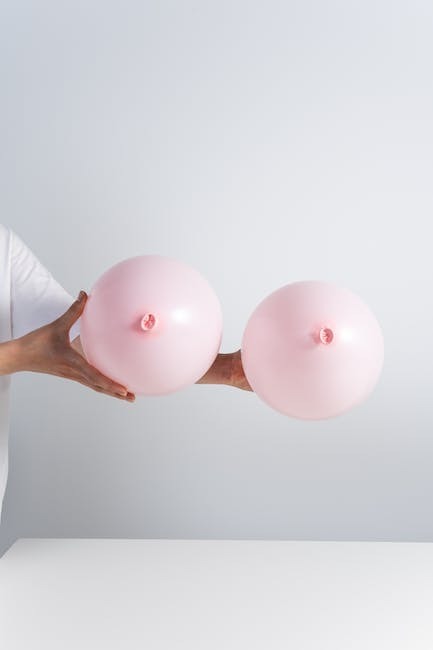Progesterone is a sex hormone that is only found in women. Each month, it is primarily produced in the ovaries following ovulation, and it is an essential part of the menstrual cycle and pregnancy maintenance. In this article, I have discussed progesterone and how it induces menstruation.
Progesterone Induced Menstruation
Progesterone aids in the regulation of your menstrual cycle, and however, its primary function is to prepare your uterus for pregnancy. Each month, after you ovulate, progesterone helps thicken the uterine lining in preparation for a fertilized egg. If no fertilized egg is present, progesterone levels fall, and menstruation begins.
Progesterone and Pregnancy
When a fertilized egg implants in the uterine wall, progesterone aids in the maintenance of the uterine lining throughout pregnancy, breast development, and breastfeeding required progesterone. It enhances some of the effects of estrogen, another female hormone, and interacts with testosterone, which is a precursor to adrenal hormones. Men produce a small amount of progesterone to aid in the development of sperm.
Low Level of Progesterone
Although low progesterone levels induce menstruation, too much and consistently low levels of progesterone are not suitable for women. During the childbearing years, progesterone is essential. You may have difficulty getting or staying pregnant if you don’t have enough progesterone.
Your progesterone levels should rise after one of your ovaries releases an egg. Progesterone aids in the thickening of the uterus in preparation for the arrival of a fertilized egg. The egg will not implant if it is not thick enough.
Symptoms of low progesterone in non-pregnant women include:
- Migraines or headaches
- Changes in mood, such as anxiety or depression
- Menstrual cycle irregularities
Low progesterone levels can cause abnormal uterine bleeding in women who are not pregnant. Periods that are irregular or absent may indicate that the ovaries are not functioning correctly and that progesterone levels are low.
If you become pregnant, you will still require progesterone to keep your uterus functioning until your baby is born. Your body will produce an increase in progesterone, which causes some pregnancy symptoms such as breast tenderness and nausea. Your uterus may not be able to carry the baby to term if your progesterone levels are too low.
Spotting and miscarriage are two symptoms of low progesterone during pregnancy.
Low progesterone levels may indicate an ectopic pregnancy. Miscarriage or fetal death can occur as a result of this.
In the absence of progesterone, estrogen may become the dominating hormone. This may result in symptoms such as:
- Increased weight
- Reduced sexual desire
- Mood swings
- Depression
- PMS, irregular menstrual cycle, and excessive bleeding
- Fibrocystic breasts
- Tender breasts
- Fibroids
- Gallbladder issues
Treatment
You may not experience any symptoms of low progesterone and so do not require treatment. However, hormone therapy may be beneficial if you’re attempting to conceive. Hormone therapy raises progesterone levels and may aid in thickening the uterine lining, which could increase your chances of having a healthy pregnancy and carrying it to term.
Hormone treatment can help with menstrual abnormalities and abnormal bleeding. Hormone therapy for severe menopausal symptoms usually consists of estrogen and progesterone. Endometrial cancer is more likely in women who take estrogen without progesterone.
Progesterone supplements treatment options include:
- Creams and gels that can be applied topically or vaginally suppositories that are often used to treat low progesterone levels, which cause reproductive issues
- Oral drugs (either estrogen alone or a combination of estrogen and progesterone) may assist in alleviating symptoms such as:
- Night sweats
- Hot flashes
- Vaginal dryness
Progesterone has been shown to boost mood in particular women. Oral progesterone may have a relaxing effect, making sleep easier.
Hormone therapy may raise your chances of:
- Stroke and heart attack
- Clots in the blood
- Gallbladder problems afflict certain kinds of breast cancer.
Your doctor will most likely advise you against hormone therapy if you have a history of:
- Breast cancer
- Liver disease
- Cancer of the endometrium
- Stroke
- Blood clots
Natural remedies for raising low progesterone levels include:
- Boosting your consumption of vitamins B and C, which are required for progesterone maintenance.
- Consuming more zinc-rich foods, such as shellfish, lowers stress levels because stress causes your body to create cortisol instead of progesterone.
In general, progesterone is not supplied in women experiencing menopausal symptoms of hormone imbalance. This is because menopausal symptoms are caused mainly by reduced estrogen levels.
Hormone replacement does have some hazards, which you should address with your doctor. There are prescription drugs designed to look exactly like your body’s naturally occurring hormones, and these are sometimes referred to as “bioidentical hormones.” While these may appear more advantageous, they include the same hazards as other prescription formulations. You should consult a Gynecologist if you have any issues regarding your menstruation, and the doctor can tell you what could be the reason for hormonal imbalance or something else. You can book your appointment with the Best Gynecologist in Rawalpindi through Marham.
Frequently Asked Questions (FAQs)
1- Can progesterone cause menstruation?
A decrease in progesterone causes the uterus to shed its lining and menstruation. When that drop occurs too quickly, cycles become irregular, and additional symptoms (headaches, mood changes, reduced libido, weight gain, and so on) may occur.
2- How does progesterone cause menstruation?
The first day of menstruation is referred to as “day 1.” If you have your period regularly and your cycles are typically 27-30 days long, begin taking progesterone on the 14th day after your flow began and continue for 14 days, or until cycle day 27.
3- When does menstrual begin after using progesterone?
Without fertilization, the corpus luteum begins to degrade between 9 and 11 days following ovulation, and this causes a decline in estrogen and progesterone levels, resulting in menstruation. The luteal phase usually lasts 14 days; however, it can last anywhere from 9 and 16 days.












